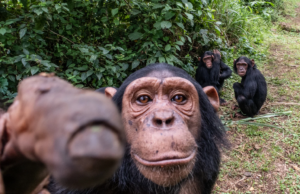GAP Mexico: Invictus – How a black bear helped end cruelty in Mexican circuses

In Mexico, it took the fight to end the cruelty of the circuses that exploit animals more than a decade to achieve its main goal. The story of an American black bear contributed in stopping this animal abuse. This American black bear was called Nait the Dancer, and was forced to make tricks on a travelling circus. In March of 2014 he was rescued by the Federal Office of Environmental Protection (PROFEPA) along with a Bengal tiger that had dysfunction on its limbs, a lion whose claws and fangs had been removed, and three spider monkeys. The bear was renamed Invictus and his story became known while the debate over the prohibition of animals in circuses was developing.
Invictus was a survivor. At the Harley Circus located in Dzidzantun in the state of Yucatan, he used to chew his cage and because of this his jaw started to infect, and because he didn´t receive prompt medical treatment the infection spread and had his jaw removed. After his rescue he was taken to the Centenario Zoo Park located in Yucatan. He was transferred from Yucatan to Hidalgo to the Biopark Coexistence Pachuca. His transfer took about 17 hours. While at the Biopark, Invictus was rehabilitated and had reconstructive surgery where he had titanium plates implanted that allowed him to eat correctly.
The General Office of the Republic (PGR), through the Specialized Unit on Environmental Crimes Investigation and Provided in Special Laws (UEIDAPLE) exercised criminal action against the owner of Harley Circus, Jose Luis Orozco Lara, who was found responsible of the mutilation Invictus suffered.
In Mexico, the black bear is enlisted as an endangered specie in accordance with the Official Mexican Norm 059. Furthermore, the Federal Penal Code establishes that it is a crime to harm a wildlife specimen in closure, considered endangered or regulated by a international treaty in the article 420 fraction V.
It seemed that Invictus´ story would change since The Wild Animal Sanctuary in Denver, Colorado opened its doors to him. The head of the Secretary of Environment and Natural Resources (SEMARNAT) announced afterwards that Invictus, along with the tiger Cucho and the lion Morelia, who were also in the process of rehabilitation at Biopark Coexistence Pachuca, were going to be transferred to the sanctuary in Colorado so they could have a better quality of life.
The Biopark is a Rescue and Rehabiliation Unit of Wild Fauna that back then housed close to 50 species in a temporary way, of which 20 were large carnivores.
Invictus never left to the sanctuary. After several reconstructive surgeries, he died the morning of the 14 of October 2014 as a result of cardiac arrest. His heart didn´t resist, but his story transcended on the future of the hundreds of animals exploited every year in Mexico.
The 9 of December of that same year, the Senate approved with 91 votes in favor, two against and one abstention, the initiative to modify the General Wildlife Law. The initiative was turned to the Chamber of Deputies. The prohibition of marine shows where seals, dolphins, orcas and other species are used was also approved, however, this shows carry on and currently the mexican society fights so that the dolphinariums, aquariums and zoos come to an end.
After its publication in the Official Gazette the 9 of January 2015, the law went into effect the 8 of July 2015, with nationwide enforcement. The accomplishment was made through the domino effect. It started state by state and by the time it became national, Mexico City and 16 states had already prohibited the use of animals in circus shows.
The law only contemplated not continuing the exploitation at shows, however, the circuses remained responsible for the animals. Nonetheless, twelve tigers and three lions were rescued after been abandoned by circus Solary, in Veracruz, and were sent to Mexico City. Four camels, three dromedarys, six tigers and seven baboons abandoned by circus Soley were rescued in Merida, Yucatan to be later transferred to the Centenario Zoo Park.
Moreover, 54 animals were seized to 14 circuses: 31 of them because their lawful origin could not be certified, 19 for suffering faults to a dignified and respectful treatment, and the remaining four for administrative non-compliances. The fines issued to the circuses amounted a total of a million 581 thousand 713 Mexican pesos.
The story of Invictus had a media coverage that convinced the society to take matters into its hands. Currently, more than 500 animals have been freed from being exploited on circus shows, but much still remains to be done. Circuses would see a new era where they could continue their tradition without exploiting animals. The circuses renewed their offer; the shows now are of balancing, juggling, acrobatic, comedy and magic acts, amongst others.
Sources:
https://www.youtube.com/watch?v=BiS75ha_WLE

 Español
Español
 Português
Português








